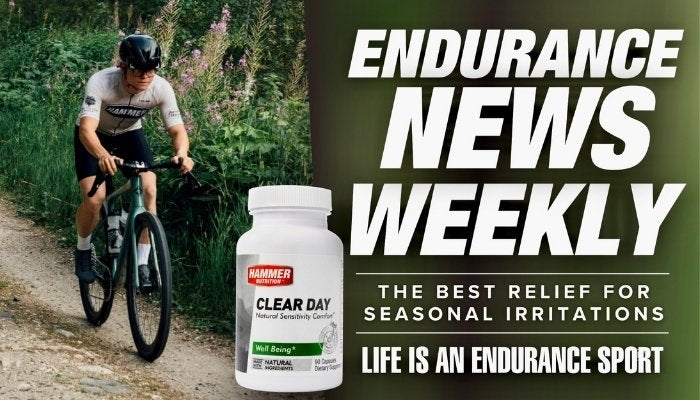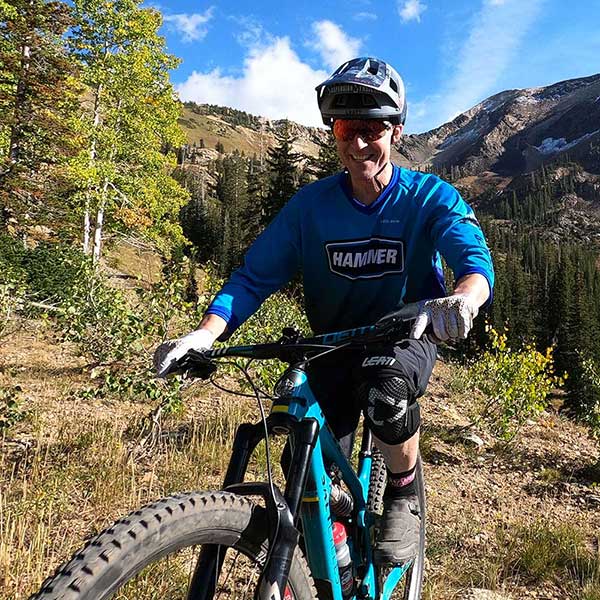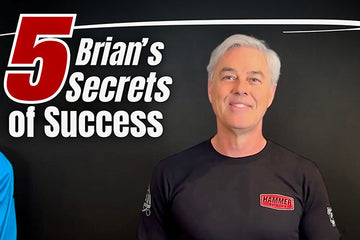
BY DR. BAYNE FRENCH, MD DC
Welcome back! Thank you for continuing on in this educational series all about lipids. Before wrapping up, here is a bit from the original introduction, to serve as reminder to, as in all things, educate yourself and be your own advocate. In doing so, be sure to take the final Summary points along with you.
----------------------------------------------------------
The more I learn and read, and with every passing clinical year of seeing thousands of patients, I realize how little I know. This is why I align less with the expert and more with the student. Experts pontificate on what they know and why you should know it. Savvy students may teach but are constantly questioning, observing and learning themselves. I am driven to learn more about health and wellness because I believe a better version of society, our country, and the world starts with the individual.
Let’s talk some more about fat. Stop the eye-rolling! Yes, it’s true I’ve written about it before, but this article will include new concepts. Like our foray into the Essential Fats wilderness of the last articles, this one may also be frightening. We give meaning to everything. Once you understand that you choose what meaning and importance to place on something, you can also know that it is you, not external circumstances, who determines the quality of your life. (Bernard Roth, Ph.D.)
So the meaning I want to be attached to this article is hope. Thank you, Bernie.
----------------------------------------------------------
Association Between LDL and CVD:
I am not disputing that LDL levels correlate with cardiovascular disease. Increased LDL, increased risk have been shown in many studies. What? Didn't I just say that the standard lipid panel "sucks" at predicting risk? Yes, I did, and I mean it.
There are genetic syndromes, Familial Hypercholesterolemia, where chol levels are extremely elevated. These individuals have a high CVD burden. They have chol deposits everywhere, even in their eyes and tendons. Yes, it will accumulate in blood vessel walls as well in an accelerated manner.
Steinberg et al. (NEJM. 1989) and Jaakkola et al. (Coronary Artery Disease. 1993) have both reported that "native" (natural, unaltered) LDL is NOT abnormally accumulated or incorporated into blood vessel walls. Modified LDL particles do accumulate abnormally. These modified particles are small and dense. They circulate in the bloodstream much longer and are acted on unfavorably by oxidation, desialylation, and glycation.
Statins
Statins are a group of medications that interfere with chol production. They have been widely purported to lower the risk of CVD and heart attacks. There are few things within medicine that are so vehemently clung to this concept. The status quo is powerful here, and although massive amounts of data over decades have brought into question the rationale for the widespread use of these drugs, most medical providers do not deviate from their fervent dogma. The role unquestioned assumptions play becomes obvious if we look back at social and political norms of the past (royalty, slavery, human sacrifices, child labor, blood-letting, etc.). Each of these was assumed to be an intrinsic part of the given culture and passed unnoticed and uncontested until its presence was brought into the foreground and its legitimacy questioned.
Nilsson et al. (J Negat Results Biomed. 2011) performed a very large study looking at individuals between 1998 and 2002 regarding statin use and heart attacks and death. “Though a widespread and increasing utilization of statins, no correlation to the incidence or mortality of AMI (heart attack) could be detected”.
There is certainly something powerful biologically going on with statin medications. In addition to lowering chol, they lower inflammation and act as antioxidants. To say that they are universally beneficial and indicated for everyone with elevated chol is grossly inaccurate. Like Kenny Rogers said, "You've got to know when to hold 'em, know when to fold ‘em". Statins likely help reduce CVD in certain situations. Like men under 70 who have already had a heart attack, and men with numerous risk factors (elevated blood pressure, abdominal Obesity, diabetes, smoking, etc.). As Abramson et al (BMJ. 2013) reported, for the majority of people for which statins are prescribed (specifically for "primary prevention," people who DO NOT have heart disease), the benefit is lacking, while side effects and risks are significant.
Very often, the "36% reduction" in heart attacks attributable to statin treatment is mentioned with little understanding of what that means. It is a statistical figure referring to relative risk reduction. The actual reduction in heart attacks was 1% (3% down to 2%). This is absolute risk reduction. The benefit of statin medication for relatively healthy people without known heart disease is just not there. A group of independent researchers reviewed vast data (Cochrane Database Systematic Reviews) and found the evidence limited that statins help prevent a first heart attack, and “caution” should be taken in prescribing them for this reason (75% of statin prescriptions are written for low-risk patients).
An independent (no industry funding) group of doctors and scientists formed a group whose foundation is a concept called NNT (number needed to treat). It is a way of looking at the real benefit and risk of treatment. Their work on statins (and other interventions) can be found at www.thennt.com. It is not favorable in regards to statin use.
Experimental verification is itself also a rather imperfect tool. I think it is essential to understand that every time someone uses science or research, he is not talking about the work of some omnipotent beings with access to revealed truths but of fallible people working in a currently accepted paradigm and socialized into a scientific family and job structure. Bernie knows that well-intentioned "experts" make mistakes all the time. And that initially well-intentioned research can easily be swayed by funding, grants, and the promise of career advancement.
Summary
This article is a monster in length, content, and controversy. Let me distill it down to its highlights.
- Educate yourselves. Rely not on standard advice on lipids. Break the thrall of conventional wisdom.
- Understand that much of the research done on lipids has been drug industry-funded. The cookie-cutter recommendations on lipids are the antithesis of individualized medicine. Many institutions, groups, behaviors, and ways of thinking in our society today would make no sense if there were not a lot of people participating in them. It makes the point that if enough people do it, it stops being crazy and instead becomes the accepted norm.
- Carbs and especially sugar trigger the liver to make more fat and chol in a process called lipogenesis. This is basic science, not my opinion. Dr. Krauss (Krauss et al. Am J Clin Nutr. 2006) showed that sugar is a principle driver of small, dense LDL. High carb and especially high sugar diets drive the production of tg, lower HDL, increase the number of LDL particles, and reduce the size of LDL particles (Parks et al. Proc Nutr Soc. 2002; Krauss et al. J Nutr. 2001).
- Reliance on LDL as a prognostic marker for CVD is misguided and outdated. Prado et al (J Clin Lipidol. 2011), among many others, showed that heart disease risk is much better determined by LDL-P (LDL particle number) and LDL size. Advanced lipoprotein testing is necessary to determine these values. If this is not possible, the most useful part of the standard lipid panel is the TG/HDL ratio. It really should be under 3.
- Reduce inflammation. Hansson et al (NEJM. 2005) is responsible for a study some authorities consider pivotal in our understanding of the mechanisms behind inflammation, not chol, as the root cause of atherosclerosis.
- Prototype yourself… A prototype is a sample or model created to show or test concept-something to be learned from. In solving problems, an excellent way to move forward is to incorporate a prototype into your process. Prototypes do not necessarily have to resemble a physical object. They can take any form. After education, enact changes for yourself. Changes that are enjoyably sustaining. See how you feel, and recheck laboratory tests.
- As Anthony Robbins said, “If you always do what you have always done, you will always get what you have always gotten”. You alone possess the ability to change your life course. What you eat and how you eat it is foundational. One more passage from Dr. Roth, The best way forward is embedded in the design thinking methodology: Manifest a bias towards action.










7 comments
I really appreciated the articles revealing important information on lipids. As well as the mantra of past practice determining current practice without question. Thank you for providing your insight.
I have recently reviewed the perceived benefits of medium chain triglycerides – MCT. They sound promising but lack extensive research. What is your perspective on MCT oils?
———
Hammer Nutrition replied:
Hello Lauren, Thank you for your comment and question. We are fans of MCT (medium chain triglyceride) oil, usually derived from coconut these days. There is enough research to know this is a safe and effective dietary source of dietary (aka carb replacement) fat that does not require Lipase for digestion. We use it in our Phood meal replacement product for this reason. BDF
I find this article very interesting; I have a lot of inflammation, working with olive oil now, just started we’ll see how it goes, 76 yrs old
———
Hammer Nutrition replied:
Hello Robert, Thank you for your comment, and sorry about your inflammation. Adding more oil/fats to your diet is a good start, but moving towards an anti inflammatory diet (quick search will turn up books, cookbooks and more on this subject) – meaning reducing processed/added sugar, dairy and wheat as much as you can will be most helpful. These foods can be deliciously replaced with animal or vegetable fats and protein. BDF